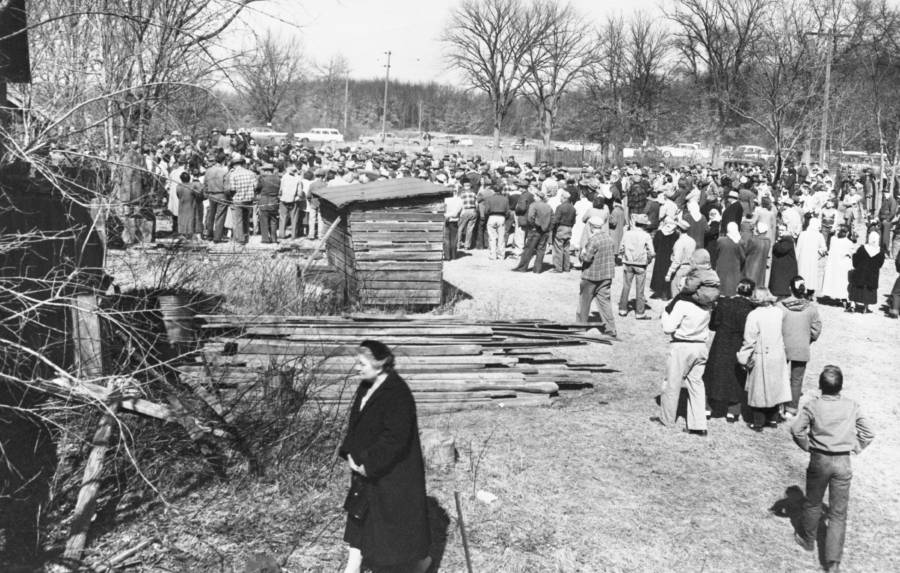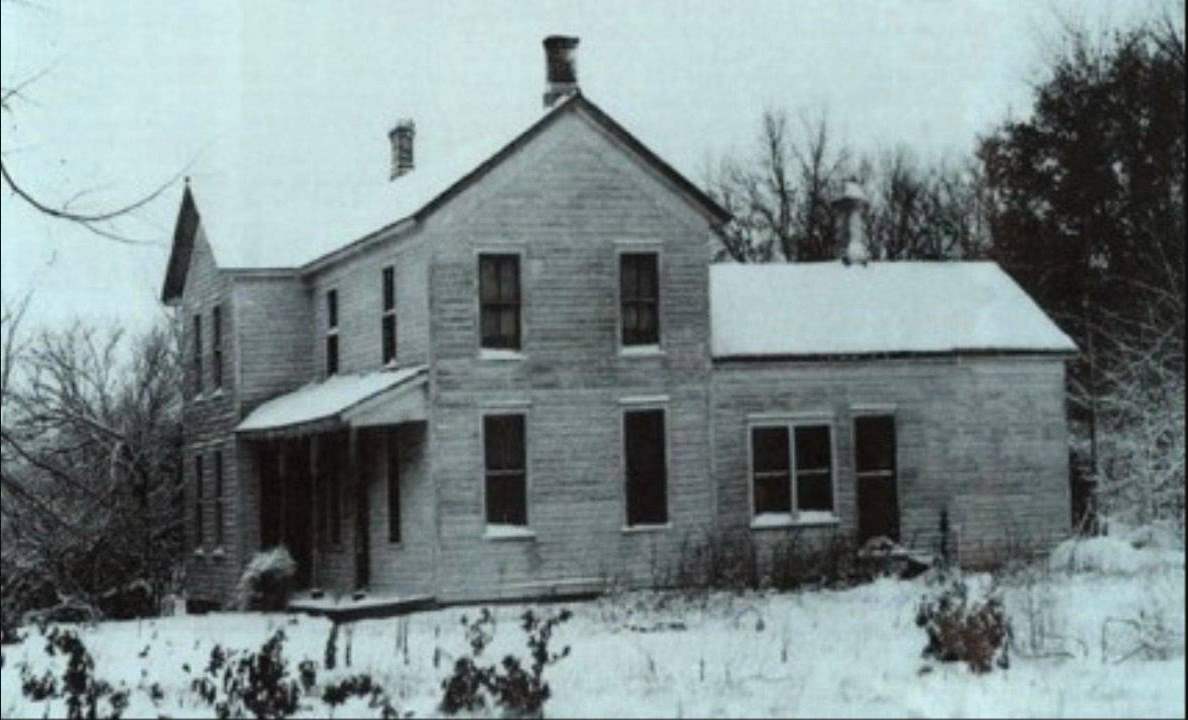Table Of Content

Frequently asked questions about the life and crimes of Plainfield, Wisconsin murderer and grave robber Ed Gein. Despite the large number of human body parts found in Ed Gein’s house, he was convicted of killing only one person, Bernice Worden, who was found shot, decapitated, and hanging by her ankles in the house. The La Crosse Tribune reported that this was exactly ten days before it was scheduled to be auctioned. Ed Gein died of lung cancer at the age of 77 on July 26, 1984. Following the police visit to Ed Gein’s house, the “Butcher of Plainfield” was arrested. He was found not guilty by reasons of insanity in 1957 and sent to the Central State Hospital for the Criminally Insane, where he was diagnosed with schizophrenia.
The Best Place To Live In Kansas
Inside the true story behind Texas Chainsaw Massacre that saw psycho Ed Gein flay victims & make furniture... - The US Sun
Inside the true story behind Texas Chainsaw Massacre that saw psycho Ed Gein flay victims & make furniture....
Posted: Mon, 21 Feb 2022 08:00:00 GMT [source]
Worse than the bones, however, were the household items that Ed had made from human skin. Police went to Ed’s farmhouse to investigate — and found themselves in the middle of a waking nightmare. There, authorities found what would later inspire horror movies such as Silence of the Lambs, Psycho, and The Texas Chainsaw Massacre. But when family friend Hollis Brown saw the cauldron, he told them he had seen it on the Gein farm when he was helping authorities remove evidence from the house. According to Brown, that cauldron had contained human entrails when he last saw it.
November 21, 1957
According to Fox News, his mother, Augusta, was a domineering matriarch who was verbally abusive towards her son Ed. His brother, Henry, reportedly died of asphyxiation in a mysterious fire in 1944, a death that investigators later suspected could have been planned by Ed Gein. Bettmann/Getty ImagesEd Gein’s farmhouse, where he collected body parts for over a decade and used bones and skin to make gruesome objects. When police entered his Plainfield, Wisconsin home in November 1957, following the disappearance of a local woman, they walked straight into a house of horrors. Not only did they find the woman they were looking for — dead, decapitated, and hung from her ankles — but they also found a number of shocking, grisly objects crafted by Ed Gein. Bernice Worden went missing from her hardware store on opening day of deer hunting season, November 16th, 1957.
See the Grave of Ed Gein in Plainfield Cemetery
Living alone, far from town, he began to sink into his obsessions. Ed filled his days by learning about Nazi medical experiments, studying human anatomy, consuming porn — though he never attempted to date any real-life women — and reading horror novels. He also began to indulge his sick fantasies, but it took a long time for anyone to realize it. Police found skulls, human organs, and gruesome pieces of furniture like lampshades made of human faces and chairs upholstered with human skin. Gein’s goal, as he later explained to police, was to create a skin suit to quasi-resurrect his dead mother with whom he’d been obsessed for years.
The cash register was gone and there was a trail of blood leading all the way out the back door. The rest of Ed Gein's house, meanwhile, was utterly neglected. Piles of household items, furniture, and nondescript items collected dust and grew from small piles to undeniable mounds.

What movies are based on Ed Gein?
When all was said and done, though, whatever happened to the old structure? The outcome of the house itself has as many twists and turns as the story of Gein himself. When Plainfield killer and grave robber Ed Gein was arrested on November 16, 1957, he was taken to the Waushara County jail in Wautoma, WI. Today, the old jail is the home of the Waushara County Historical Museum.

Coincidentally, this stage of Gein's psychological development and quality of life and environment occurred at the same time that several Plainfield residents went missing. This is when Ed Gein's legacy as one of the most psychologically unhinged, dangerous, and macabre serial killers of the 20th century began in earnest. Gein and his brother were attempting to pick up the slack left by their admittedly complacent father after he passed away. The two brothers worked a variety of odd jobs to make ends meet and support their mother lest her wrath be turned against them. Though Gein had likely already been shaped and molded in terms of repressive behavior and unnatural rejection of normal urges, his mental health issues wouldn't truly take shape until both of his parents died. In 1940, when Ed was 34 years old and still lived at home, his father died.
It is likely, though, that somewhere beneath the surface of the bleak and overgrown property, some of Gein’s secrets may still be lurking. Though Ed is buried in Plainfield Cemetery with his family, visitors often end up at Spiritland searching for his grave. Many people have reported paranormal experiences there since, leading to the belief that Gein’s activities may have left the dead restless in Spiritland. Its name is derived from a man’s claim that he was able to communicate with the spirit of his wife there after she was buried. Gein robbed at least one grave here, and tampered with two others. The tavern was reopened by new owners after Mary’s disappearance, and then eventually converted into a residence before being torn down.
What Happened To Ed Gein's Murder House?
Although it is ambitious to narrow down the structural achievements that make this city unique, the architects at Generator Studio, located in the Crossroads Art District, took on the noteworthy task. In early 1968, Gein was determined fit to finally stand trial. However, he was also found insane at the time of the murder, and as such, he was recommitted to Central State Hospital.
The current owner has granted access to the property for film crews in recent years to shoot television content about Ed Gein. In 2006, Fisher attempted to sell the property by listing it on Ebay for $250,000 under the heading “Ed Geins Farm…The REAL deal! Gein never left the house for social gatherings nor dated anyone.
There are playgrounds, areas for dogs, lakes for fishing, and lots of running, walking, and biking paths. The city also offers sports facilities such as baseball and softball fields, tennis and volleyball courts, and splash pads for hot days, according to the City of Overland Park. With a rich culture and exceptional amenities, buying a home in Overland Park could be an enriching experience.
A day before the property and all of Gein’s possessions were to be auctioned off in March of 1958, a fire reduced the house to a smoldering pile of debris. The fire was never investigated, but rumors of the property being purchased and opened as a tourist attraction called The House of Horrors may have precipitated the event. Though he was only tried for one murder (that of Bernice Worden) Gein also admitted to killing and dismembering Mary Hogan during his initial interrogation. The confession was ruled inadmissible, however, because the sheriff had slammed Gein’s head into the wall. A modern photo of the building juxtaposed with a historical view of Worden’s hardware store as seen from Spee’s service station across the street, taken shortly after Gein’s arrest in 1957. The unofficial Ed Gein museum is the Waushara County Historical Museum in Wautoma.
The house burned down in March of 1958, and all the outbuildings were razed in the following years by the new owner. The site where the farmhouse once stood is now just an empty, overgrown lot. After this look into Ed Gein's house of horrors, discover the most chilling quotes by serial killers. Then, make sure you check out the best serial killer documentaries that will chill you to the bone. But what they found inside Ed Gein's house is only more unsettling after learning the full story.
During the police investigation of the disappearance case of Bernice Worden in 1957, they found that Ed Gein had systematically robbed graves and collected body parts, which he used to make household items, clothing, and masks. They also discovered the head of Mary Hogan, a tavern operator who had disappeared in 1954. Gein was convicted of killing just one person, a judge named Robert H. Gollmar, but also confessed to killing two women — a bar owner named Mary Hogan and a hardware store owner in his hometown of Plainfield, Bernice Worden.
Ed Gein spent most of his life in the small town of Plainfield, Wisconsin. All of his (known) crimes, including grave robbing and murder, were committed within about 5 miles of his family’s farm outside of Plainfield. Until his death in 1984 at the age of 77, he only ever admitted to murdering Worden and Hogan. The other bodies — and police found as many as 40 in his home — he claimed he’d robbed from graves. You can find Ed Gein’s grave in Plainfield Cemetery beside his brother Henry, mother Augusta, and father George. His grave has been unmarked since the gravestone was stolen in 2000.
No comments:
Post a Comment